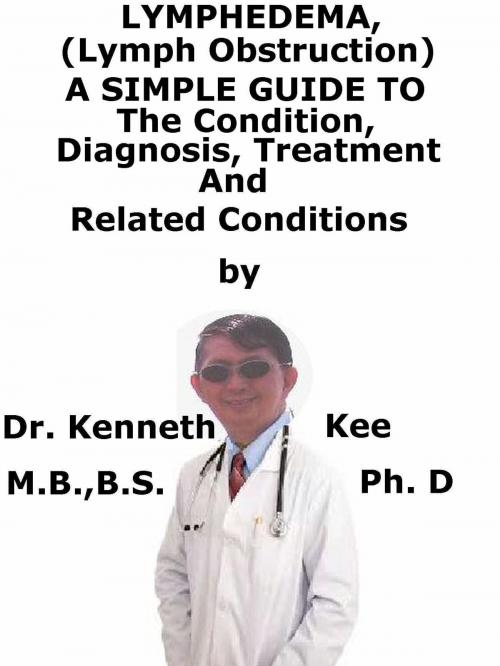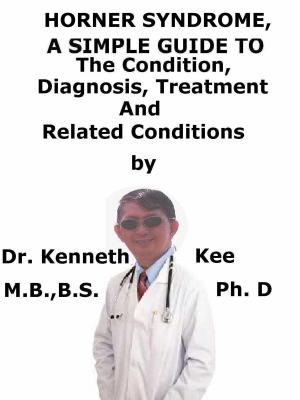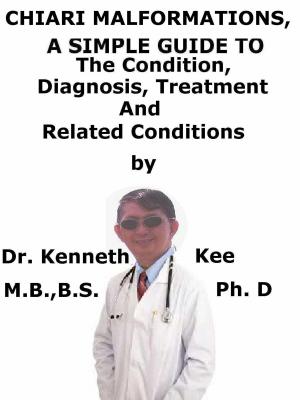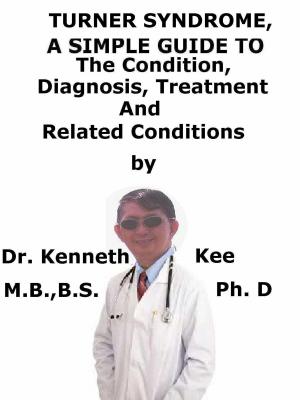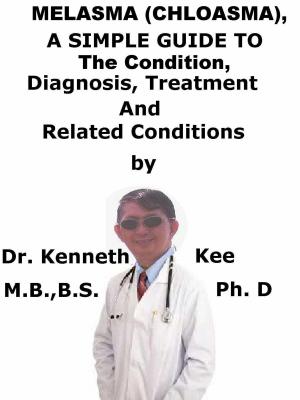Lymphedema (Lymph Obstruction), A Simple Guide To The Condition, Diagnosis, Treatment And Related Conditions
Nonfiction, Health & Well Being, Medical, Specialties, Internal Medicine, Hematology, Health, Ailments & Diseases, Immune System| Author: | Kenneth Kee | ISBN: | 9781370681273 |
| Publisher: | Kenneth Kee | Publication: | October 9, 2016 |
| Imprint: | Smashwords Edition | Language: | English |
| Author: | Kenneth Kee |
| ISBN: | 9781370681273 |
| Publisher: | Kenneth Kee |
| Publication: | October 9, 2016 |
| Imprint: | Smashwords Edition |
| Language: | English |
Lymphedema is a chronic medical condition that produces excessive collection of fluid in the leg, trunk or body part, due to abnormalities of the normal lymph flow.
The abnormal lymph flow is mainly due to the excision of the lymph nodes during surgery for cancer and radiotherapy for cancer treatment.
If the patient has gone through radiotherapy or surgical excision of lymph nodes, the patient may be at danger of forming lymphedema.
It may be useful to find out from the doctor which lymph nodes have been excised during the surgery and which lymphatic vessels of the body have been treated by radiotherapy.
Lymphedema is a chronic (long-term) condition that induces swelling in the body's tissues.
It can involve any part of the body, but normally forms in the arms or legs.
Other symptoms of lymphedema can be an aching, heavy feeling in affected body parts and difficulty moving them.
Lymphedema is the result of collection of lymphatic fluids in the body.
It can induce an arm, leg, or other area of the body to swell and become painful.
The disorder is normally lifetime.There is no cure.
There are two main types of lymphedema:
1. Primary lymphedema – caused by faulty genes affecting the development of the lymphatic system; it can form at any age, but normally happens in early adulthood
2. Secondary lymphedema – caused by damage to the lymphatic system or obstruction with the movement and drainage of fluid in the lymphatic system, often due to an infection, injury, cancer treatment, inflammation of the limb or a lack of limb movement
An infection causing lymphedema is a parasitic infection called filariasis.
The recommended treatment for lymphedema is decongestive lymphatic therapy (DLT).
DLT is not a permanent treatment for lymphedema, but it can help regulate the symptoms by:
1. Compression bandages and garments – to transfer fluid out of the affected limb and minimize further build-up
2. Skin care – to maintain the skin in good condition and decrease the chances of infection
3. Exercises – to use muscles in the affected limb to enhance lymph drainage
4. Specialized massage techniques – known as manual lymphatic drainage (MLD) – to stimulate the movement of fluid in the lymphatic system and decrease swelling
In a small number of cases, surgery may be used to treat lymphedema by:
1. The removal of sections of excess skin and underlying tissue (debulking)
2. The removal of fat from the affected limb (liposuction)
3. The restoration of the flow of fluid around the affected section of the lymphatic system – for example, by connecting the lymphatic system to nearby blood vessels (lymphaticovenular anastomosis)
TABLE OF CONTENT
Introduction
Chapter 1 Lymphedema
Chapter 2 Causes
Chapter 3 Symptoms
Chapter 4 Diagnosis
Chapter 5 Treatment
Chapter 6 Prognosis
Chapter 7 Breast Cancer
Chapter 8 Filariasis
Epilogue
Lymphedema is a chronic medical condition that produces excessive collection of fluid in the leg, trunk or body part, due to abnormalities of the normal lymph flow.
The abnormal lymph flow is mainly due to the excision of the lymph nodes during surgery for cancer and radiotherapy for cancer treatment.
If the patient has gone through radiotherapy or surgical excision of lymph nodes, the patient may be at danger of forming lymphedema.
It may be useful to find out from the doctor which lymph nodes have been excised during the surgery and which lymphatic vessels of the body have been treated by radiotherapy.
Lymphedema is a chronic (long-term) condition that induces swelling in the body's tissues.
It can involve any part of the body, but normally forms in the arms or legs.
Other symptoms of lymphedema can be an aching, heavy feeling in affected body parts and difficulty moving them.
Lymphedema is the result of collection of lymphatic fluids in the body.
It can induce an arm, leg, or other area of the body to swell and become painful.
The disorder is normally lifetime.There is no cure.
There are two main types of lymphedema:
1. Primary lymphedema – caused by faulty genes affecting the development of the lymphatic system; it can form at any age, but normally happens in early adulthood
2. Secondary lymphedema – caused by damage to the lymphatic system or obstruction with the movement and drainage of fluid in the lymphatic system, often due to an infection, injury, cancer treatment, inflammation of the limb or a lack of limb movement
An infection causing lymphedema is a parasitic infection called filariasis.
The recommended treatment for lymphedema is decongestive lymphatic therapy (DLT).
DLT is not a permanent treatment for lymphedema, but it can help regulate the symptoms by:
1. Compression bandages and garments – to transfer fluid out of the affected limb and minimize further build-up
2. Skin care – to maintain the skin in good condition and decrease the chances of infection
3. Exercises – to use muscles in the affected limb to enhance lymph drainage
4. Specialized massage techniques – known as manual lymphatic drainage (MLD) – to stimulate the movement of fluid in the lymphatic system and decrease swelling
In a small number of cases, surgery may be used to treat lymphedema by:
1. The removal of sections of excess skin and underlying tissue (debulking)
2. The removal of fat from the affected limb (liposuction)
3. The restoration of the flow of fluid around the affected section of the lymphatic system – for example, by connecting the lymphatic system to nearby blood vessels (lymphaticovenular anastomosis)
TABLE OF CONTENT
Introduction
Chapter 1 Lymphedema
Chapter 2 Causes
Chapter 3 Symptoms
Chapter 4 Diagnosis
Chapter 5 Treatment
Chapter 6 Prognosis
Chapter 7 Breast Cancer
Chapter 8 Filariasis
Epilogue
